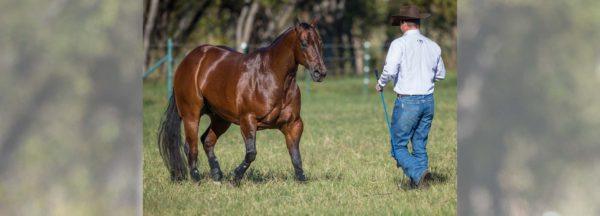Training Tip: Horse Reacts When Approached Quickly

Question: How do I get my horse to stop backing up if I move up to him too fast? I’ve been doing lots of groundwork with him and this issue seems to go away, but, if I miss a day or two, it is back. I want to use him to show in ranch riding classes. Thanks for any help. – Horsewoman 2
Clinton’s Answer: This is the reason why we practice the Run Up and Rub exercise with all of our horses. You can find the exercise in the Intermediate Series as well as on the No Worries Club website’s video library in the Testing the Method video section.
My recommendation for you is to start at the very beginning of the Fundamentals level of the Method with your horse. Forget that you’re trying to stop him from backing away from you if you approach him too quickly while waving your arms at him. Instead, focus on earning his respect and trust and follow the Fundamentals groundwork exercises in order. They’re in the order that they’re in for a reason—they each build off one another to help you establish a safe, fun partnership with your horse.
As you work through the Fundamentals groundwork exercises, gaining control of your horse’s feet and teaching him not to fear you or your tools through the various desensitizing exercises, you’ll notice him becoming more responsive and less reactive in general.
Then, when you’re ready, practice the Run Up and Rub exercise with him. The goal of this exercise is to be able to run up to the horse from any angle and have him stand still and relax. We don’t introduce this exercise until the horse knows the Fundamentals groundwork exercises well, because if he doesn’t, the chances of your horse getting scared and turning and kicking you will be high. If you follow the exercises in order, the chances of your horse behaving correctly are much greater and you’ll both stay safe.
Run Up and Rub is an exercise that you chip away at a little every day. It’s not something you spend three hours drilling into your horse. The first day he might be jumpy and reactive. The second day, you’ll see a little improvement. By the fourth day, he may not bat an eye when you run up to him with your arms waving.
Some horses, like the lazier, coldblooded ones, will be easy to teach the exercise to, and horses that are more reactive and hot-blooded will take more time.
Have a horsemanship question or looking for more training tips? Check out the No Worries Club.
